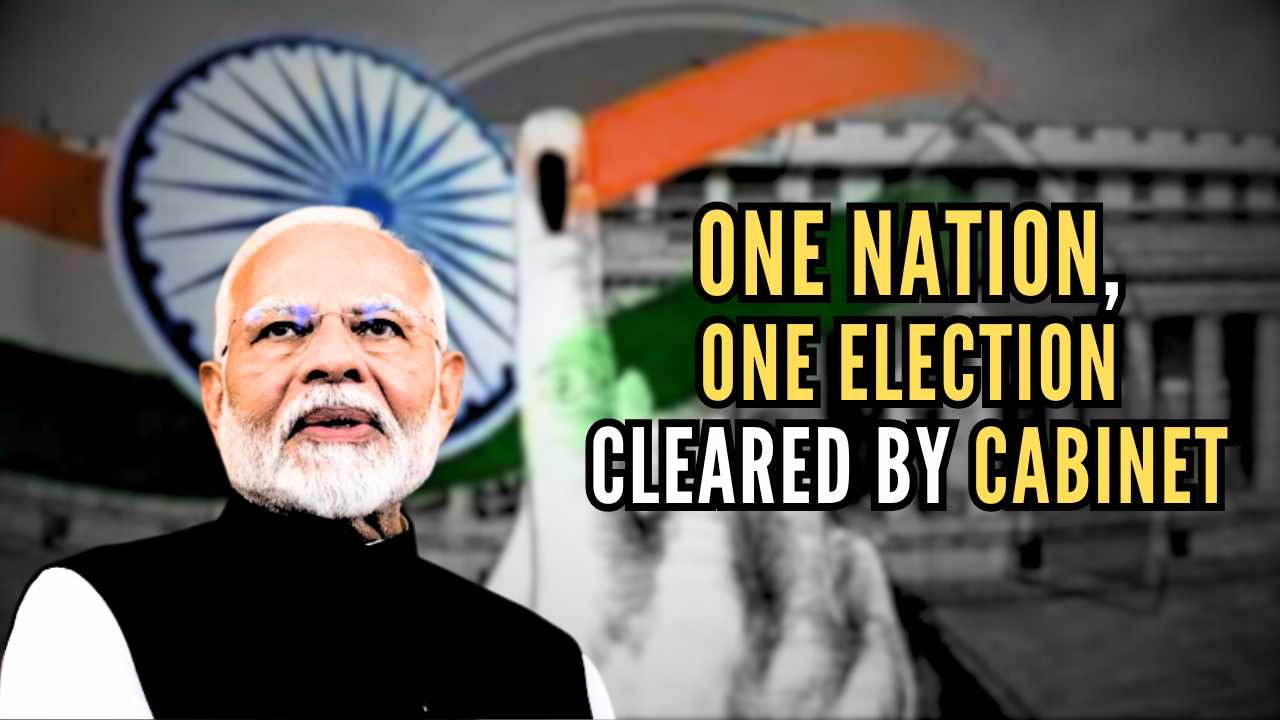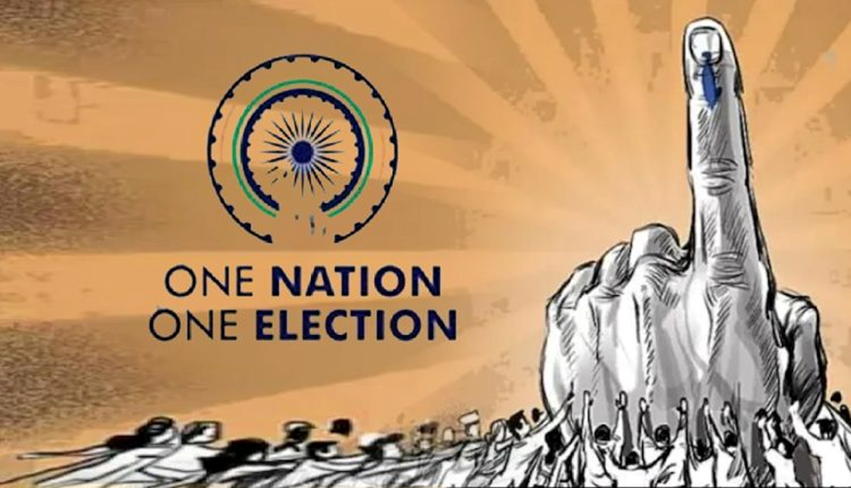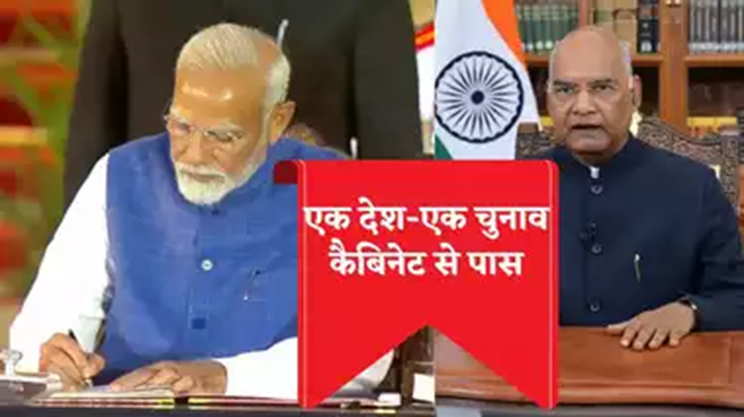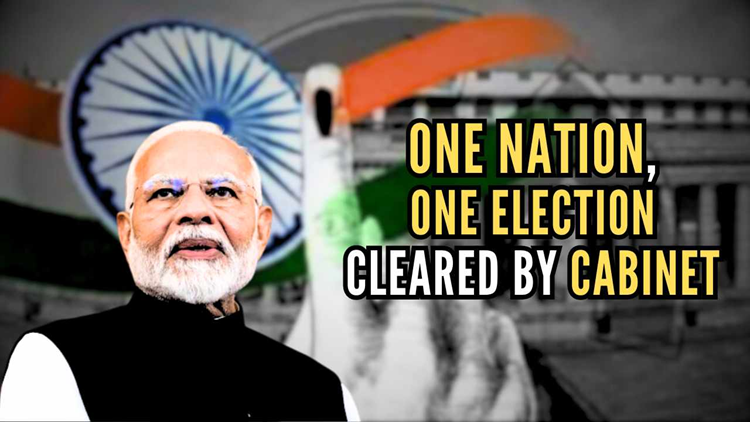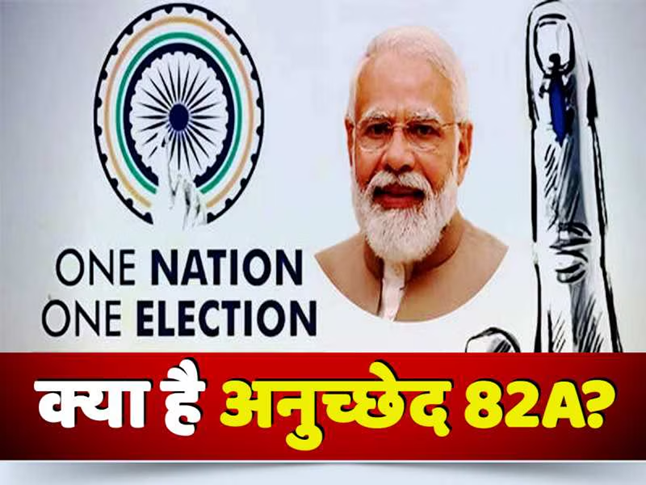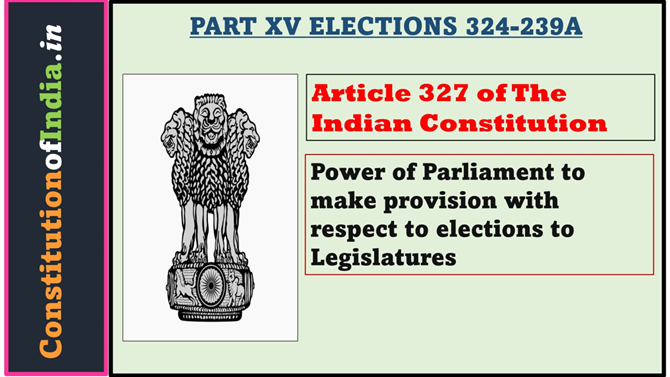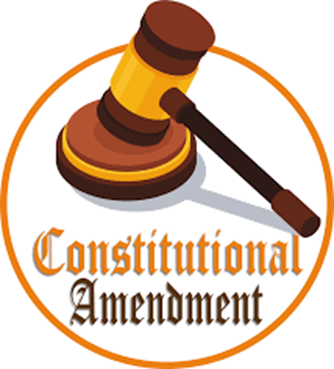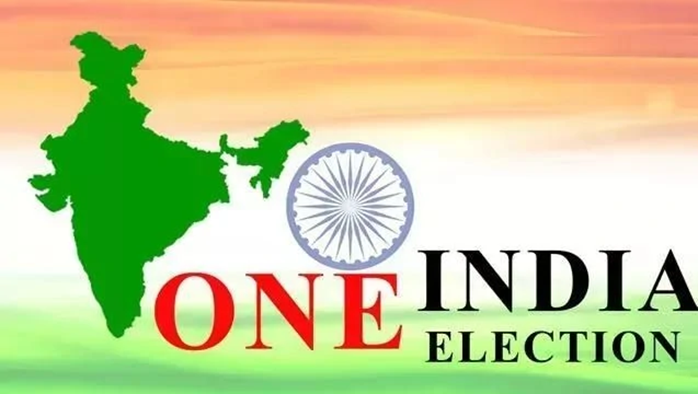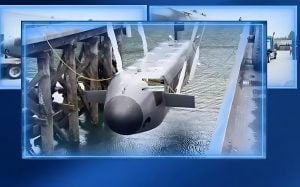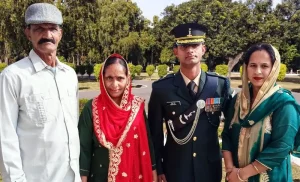The Union cabinet has accepted a high-level committee’s recommendations on ‘One Nation, One Election’ for holding simultaneous polls for the Lok Sabha, state assemblies and local bodies in a phased manner after a countrywide consensus-building exercise.
One Nation One Election Cleared By Cabinet
Why In News
- The Union cabinet has accepted a high-level committee’s recommendations on ‘One Nation, One Election’ for holding simultaneous polls for the Lok Sabha, state assemblies and local bodies in a phased manner after a countrywide consensus-building exercise.
One Nation, One Election’
- The concept revolves around conducting simultaneous elections for both Lok Sabha and State Assemblies throughout the country.
- Information and broadcasting minister Ashwini Vaishnaw said an implementation group would be formed to take forward the recommendations of the panel headed by former president Ram Nath Kovind and detailed discussions would be held on various for across the country over the next few months.
- Ashwini Vaishnaw said the move to simultaneous elections would be effected in two phases — in the first phase, Lok Sabha and assembly elections will be aligned and in the second phase, which will be held within 100 days of the first, local body elections will be covered. And for these two separate phases, there will be two Constitutional Amendment Acts. Under these two acts, a total of 15 amendments will be made which includes, the insertion of new provisions and amending others.
Constitution Amendment Bill
- According to the committee’s recommendations, the first Bill would insert a new article— 82A —into the Constitution. Article 82A will establish the process by which the country will transition to simultaneous elections.
- Article 82A will have the following 5 Sections:
- Article 82A(1): “On the date of the first sitting of the House of the People after a general election”, the President will issue a notification bringing Article 82A into effect. The date of this notification “shall be called the Appointed date”.
- Article 82A(2): It will state that “all the Legislative Assemblies constituted in any general election held after the appointed date shall come to an end on the expiry of the full term of the House of the People”.
- Article 82A(3): It will mandate the ECI to hold the simultaneous elections.
- Article 82A(4): If the Election Commission believes that elections to any assembly cannot be conducted simultaneously, it may recommend the President to declare by an Order, that the election to for such assembly may be conducted at a later date.
- Article 82(5): In such states, the deferred election results will only be valid till the next general elections and not 5 years and would again be conducted with the next general elections.
- The Bill will also seek to amend Article 327, which gives Parliament the power to make laws relating to elections to Lok Sabha, Rajya Sabha, and state legislatures, including the preparation of electoral rolls and delimitation of constituencies.
- Article 83 will be amended to change the “Duration of House of the Parliament” and Article 172 will be amended to change the “Duration of the State Legislatures”. Certain laws related to the legislative Assemblies in UTs such as The Government of Union Territories Act, 1963, The Government of National Capital Territory of Delhi Act, 1991, and the Jammu and Kashmir Reorganisation Act, 2019.
Introduction of Second Constitutional Amendment Bill
- The second Constitution Amendment Bill will be introduced in the Parliament as per the Kovind committee recommendations. This Bill would introduce Article 324A in the Constitution. This article will empower the government to make laws to ensure parallel elections of municipalities and panchayats with Lok Sabha and Assembly elections.
- A new subclause to Article 325 will suggest that there should be a single electoral roll for all the elections in a constituency.
- Ratification by states
- After the introduction of these two bills, the Parliament will follow the amendment procedures under Article 368. Since only Parliament is empowered to legislate the election laws regarding Lok Sabha and Assembly, the First Amendment bill will need no ratification from the states. However, the matters related to elections of Municipalities and Panchayats come under state subject. Therefore, the Second Amendment Bill for ONOE will have to be ratified by at least half of the states.
- President’s assent and implementation
- After the ratification of second bill and being passed by either house with prescribed majorities, the Bills will be sent to the President for her assent. Once, she signs the bills, they will become Acts. Following this, the implementation will be done by the ‘Implementation Panel’, based on the provisions in these Acts.
Ram Nath Kovind Committee
- Ram Nath Kovind committee has recommended 18 constitutional amendments, most of which will not need ratification by state assemblies. However, these would require certain Constitution amendment bills that would have to be passed by Parliament.
- Some proposed changes regarding the single electoral roll and single voter ID card would need ratification by at least half of the states.
- Separately, the law commission is also likely to come up soon with its own report on simultaneous elections, of which Prime Minister Modi has been a strong votary.
- Citing unnamed sources that the law commission is likely to recommend holding simultaneous polls for all three tiers of the government – the Lok Sabha, state assemblies and local bodies like municipalities and panchayats – starting 2029 and a provision for a unity government in cases like a hung house.
‘One Nation One Election’: Pros and ConsWhy?
- ‘One Nation One Election’ Pros:
- Reduces the overall cost of conducting elections.
- Limits the disruptions caused by the enforcement of the Model Code of Conduct during frequent elections.
- Consolidates elections into a single season, making the process more efficient.
- ‘One Nation One Election’ Cons: Could Pose Logistical Issues
- 2x EVMs & VVPAT Machines Will Be Needed
- Could Affect Smaller Regional Parties
- National Issues Likely To Dominate Over Regional Issues
- ‘One Nation One Election’: Grey Areas
- One major concern remains: what happens if a government—either at the state or central level—collapses before completing its tenure? The options include imposing the President’s Rule until the next cycle of simultaneous elections or holding separate elections for the remainder of the term, which defeats the purpose of the ‘One Nation One Election’ concept.
